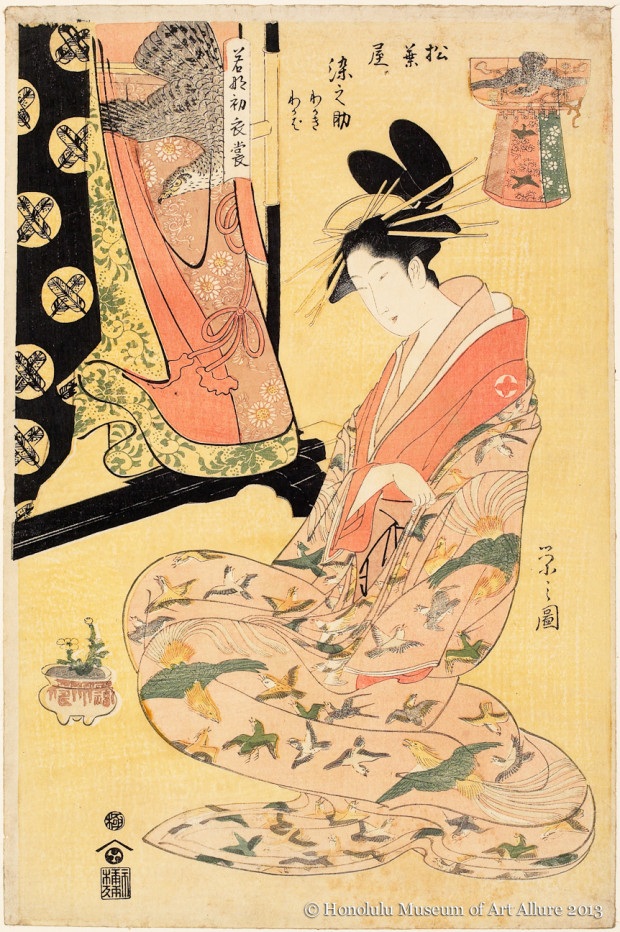Chōbunsai Eishi (1756-1829)
Somenosuke of the Matsubaya Brothel, from the series
Courtesans Modeling the New Year’s Fashions
Japan, Edo period, c. 1800
Woodblock print; ink and color on paper
Gift of James A. Michener, 1958
Honolulu Museum of Art
(14204)
The name Somenosuke was passed down through a lineage of courtesans (myōseki ) held by the Matsubaya, one of the most eminent brothels in the Yoshiwara (we have already encountered another Somenosuke from two decades earlier in a print by Koryūsai, produced by the same publisher Eijudō).
The first outfit of the New Year was one of the most important opportunities for courtesans to make a fashion statement, and they would proudly display robes created from the finest textiles as they paraded through the Yoshiwara to visit its various establishments. Rather than show Somenosuke fully dressed, Eishi has instead chosen to capture her in a private moment so that he can emphasize the spectacular bird design on her inner robe; the outer robe (uchikake) that completes the outfit, decorated with an auspicious design of a hawk (a dream of a hawk on New Year’s Eve heralded good fortune for the coming year), is hanging on a rack to the left.
Appropriate to the season, Somenosuke is admiring an Adonis plant, which flowered around the time the traditional lunar New Year occurred; accordingly, it was known as the New Year’s Day plant (ganjitsu-sō), and also as the Good Fortune and Longevity plant (fukujusō).
View info on museum database (enabled through support by the Robert F. Lange Foundation)


